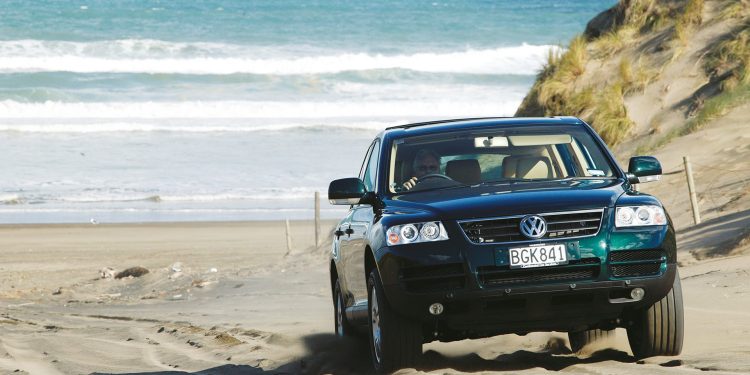2003 Volkswagen Touareg review
Words: Paul Owen | Photos: Adrian Payne
Inspired by the Sahara and named after the nomadic tribe that lives there, the biggest-ever ‘People’s Wagon’ has landed here.
Compromise is the very nature of Sports Utility Vehicles. These jacks-of-all-trades are invariably masters of none. They’ve got to jump through too many hoops to excel in any one area, and be too many things to too many different owners. The choice in the SUV sector comes down to where you want to compromise. Buy a Land Rover Defender if you want to sacrifice on-road refinement and deportment in favour of off-road ability, a BMW X5 if you prefer on-road handling at the expense of less axle articulation when rock-hopping. Yet, every so often, a SUV comes along that cuts down the compromises. Meet the new VW Touareg, a fresh Saxon invader of these SUV-infested shores, and one that’s determined to reduce the dynamic handicaps, no matter where you drive it.
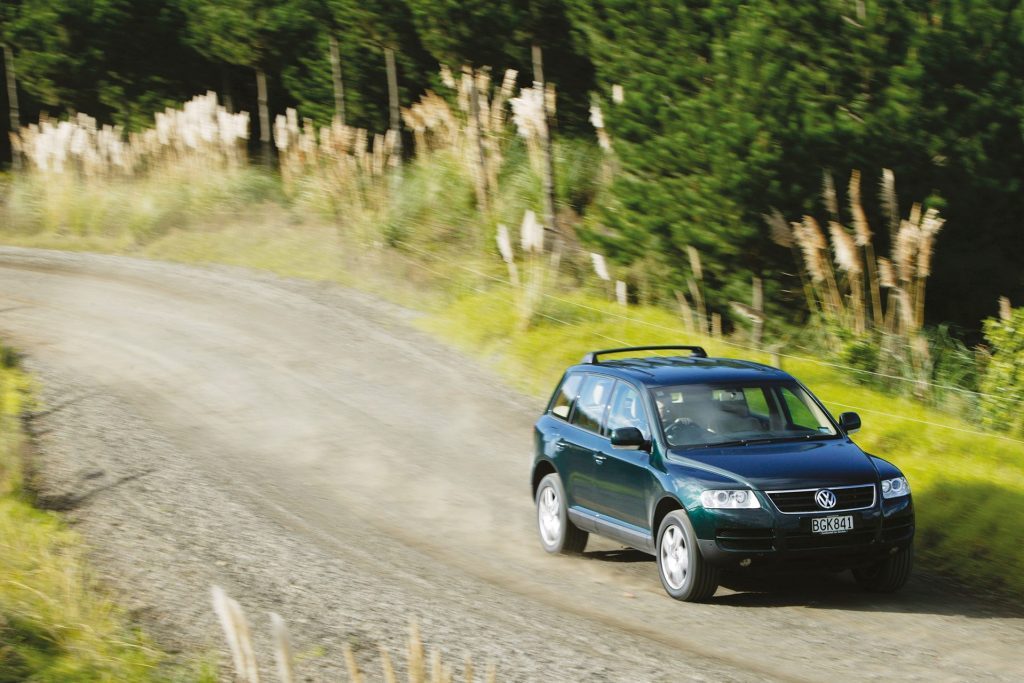
For the Touareg feels invincible and capable whatever the surface is that lies beneath its wheels. Not since the debut of the latest-generation Land Rover Discovery – with its trick active stabiliser bars – has there been an SUV launched here that’s so able to take the rough with the smooth. We loved the Disco upon first encounter here at the NZ Autocar office. By adding hydraulic rams and a g-force sensor to the stabiliser bars, Land Rover was able to retain its legendary axle articulation for off-road applications while improving body-roll control when cornering on the macadam. We applauded the way the then-new Disco’s more stable handling arrived at no compromise to off-road ability, but hated the wheezing engines and build-quality niggles. Neither of the latter are issues with the new Touareg. There’s power to burn in an engine range that starts with a 3.2 litre petrol V6, and ends with a 5.0 litre bi-turbo diesel V10 with enough grunt to interest Tranzrail. As for build, look at the badge it wears. No one builds ’em better. Hammer a Touareg hard over rough terrain, and the only protest you’ll hear is the occasional squeak of leather rubbing on leather as the upholstery shifts.
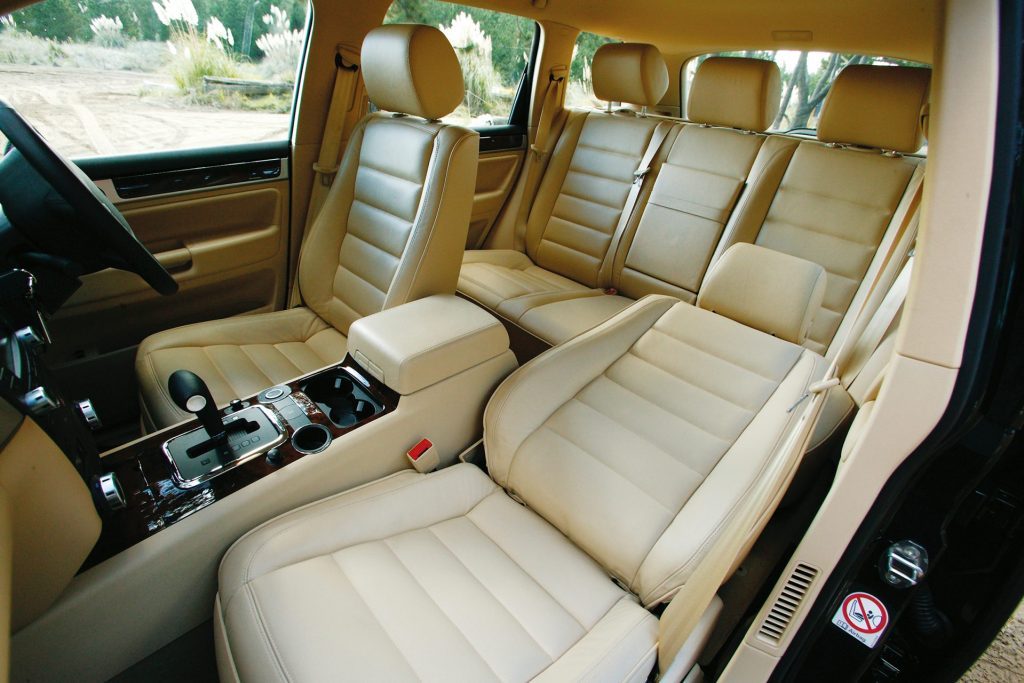
The base V6 version is the first Touareg to arrive in New Zealand. This dark, metallic-green example seen in these pictures is doing the rounds of VW dealerships; this will give the lucky 47 people who have ordered one a sample of their new steed ahead of the first official shipments in late June. We scored it for a total of 23 hours, 59 minutes and 57 seconds (after being told we could have it for 24 hours), and maximised our time at the wheel. So VBOX testing and the weight and cabin noise measurements will have to wait for another issue, but our drive confirmed all of our impressions gleaned from the international launch report in November. It’s obvious that Touareg has the potential to change perceptions, not only about VW, but SUVs in general.
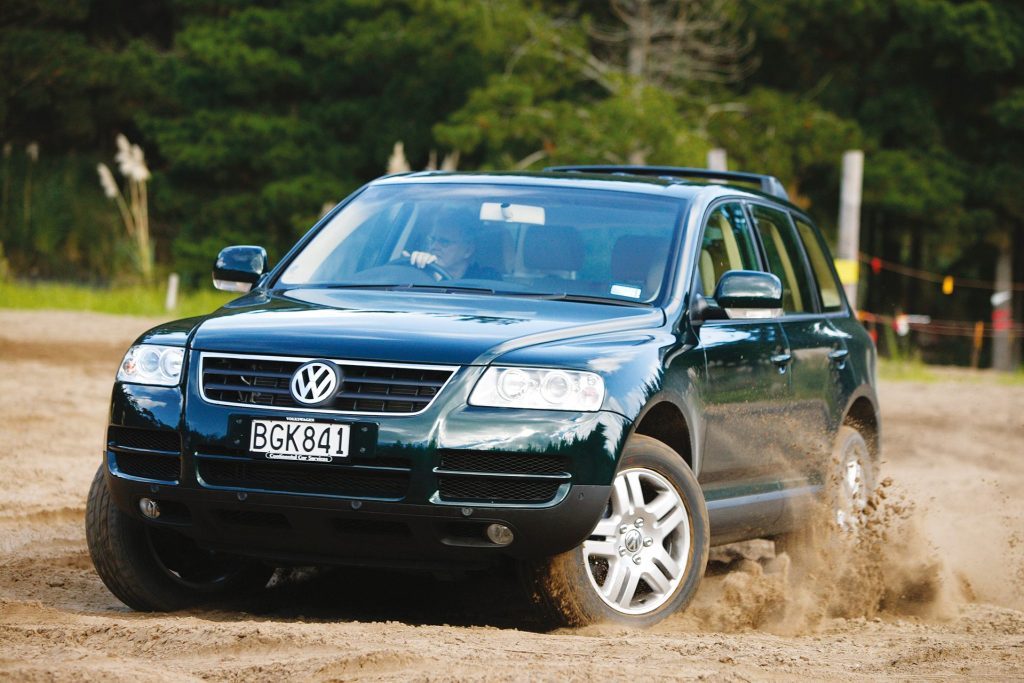
We have Porsche to thank for Touareg’s do-anything personality. The former sports-car specialist was bankrolled by Volkswagen to lead the development of a joint-venture SUV project that spawned both the Touareg and soon-to-arrive Porsche Cayenne. The latter SUV cost Porsche nothing in monetary terms; it was paid for in intellectual property instead. Porsche developed the platform and chassis for both SUVs in return for a cash flow that allowed them to build a new factory, and tool it up for the Cayenne. The first example rolled off the production line in Leipzig at no cost to Porsche shareholders. Touareg, on the other hand, cost Volkswagen a bundle of cash – but one drive, and you’ll consider it money well spent.
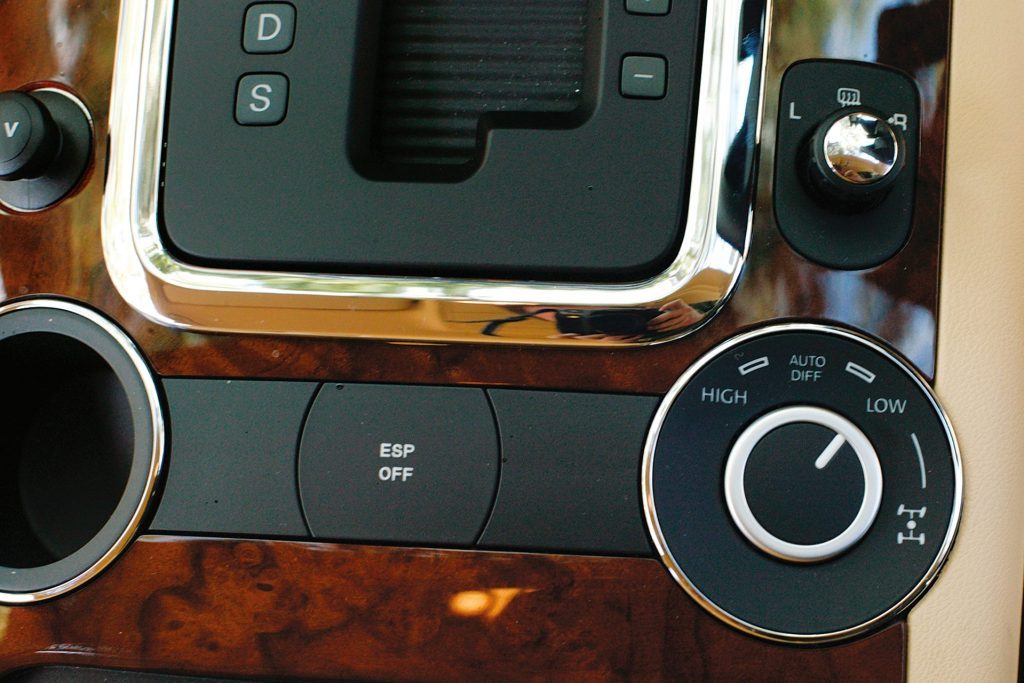
For even on the ‘steel’ suspension of the base V6, the VW has a sporty rate of turn-in lacking in most SUVs, other than the BMW X5. Body roll is tightly controlled, maximising the contact of the tyres with the road, and the wheel feels ideally weighted and reasonably willing to communicate. If you judge the physical grip of a chassis by how much an ESP system has to intervene to keep the vehicle on the road, the Touareg has more than enough. Compared to something like the Lexus RX330, there is a refreshing lack of flashing warning lights and demented beeping when you chuck it at corners. This still is no sports car – high-riding ground clearance that would win the approval of any 4wd club ensures that – but it is one of the sportier-handling SUVs, and comes with enough dynamic ability to keep an X5 honest. And, if memory serves us correctly, the air-suspended models (a $5000 option on the base V6) are even better at carving up corners. For the adaptive air springs allow a lower ride height to be selected, improving Touareg’s on-road manners further. A ‘sports’ setting also firms up the pressure in the air springs, and adds extra heft to the steering wheel.
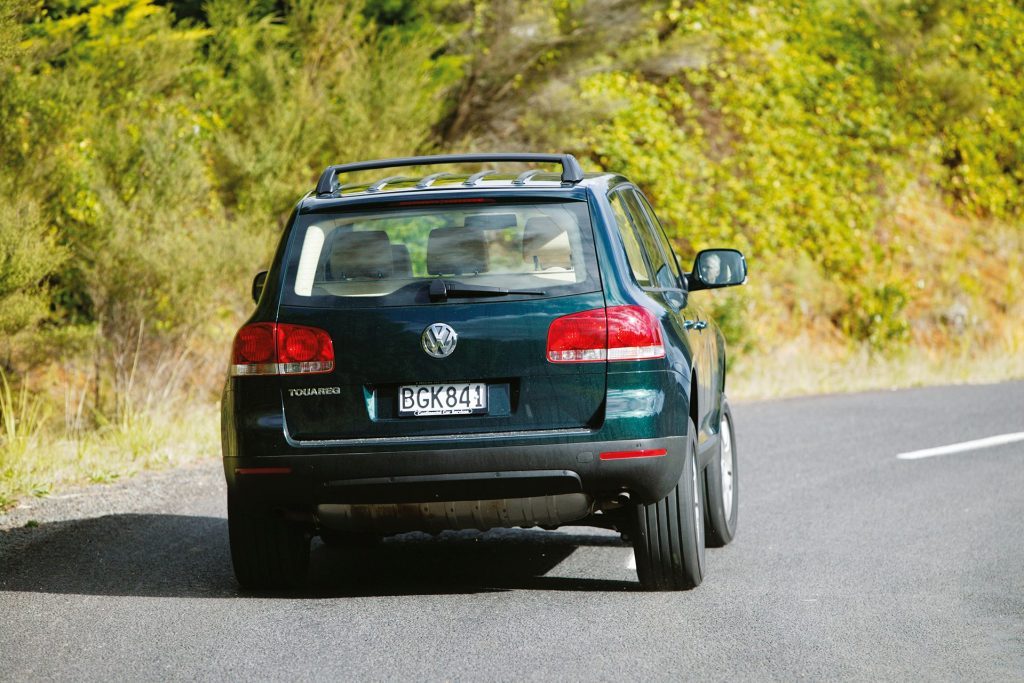
Normally such tight weight-transfer control becomes a liability off-road because of the way it reduces axle articulation, causing the wheels to keep losing contact with the terrain. Although it holds an advantage in ground clearance, Touareg really isn’t any better than the BMW in this regard. You hoist wheels into the air with relative ease, but electronics keep the vehicle trucking through the terrain by sending all the torque to the tyres still in contact with the ground.
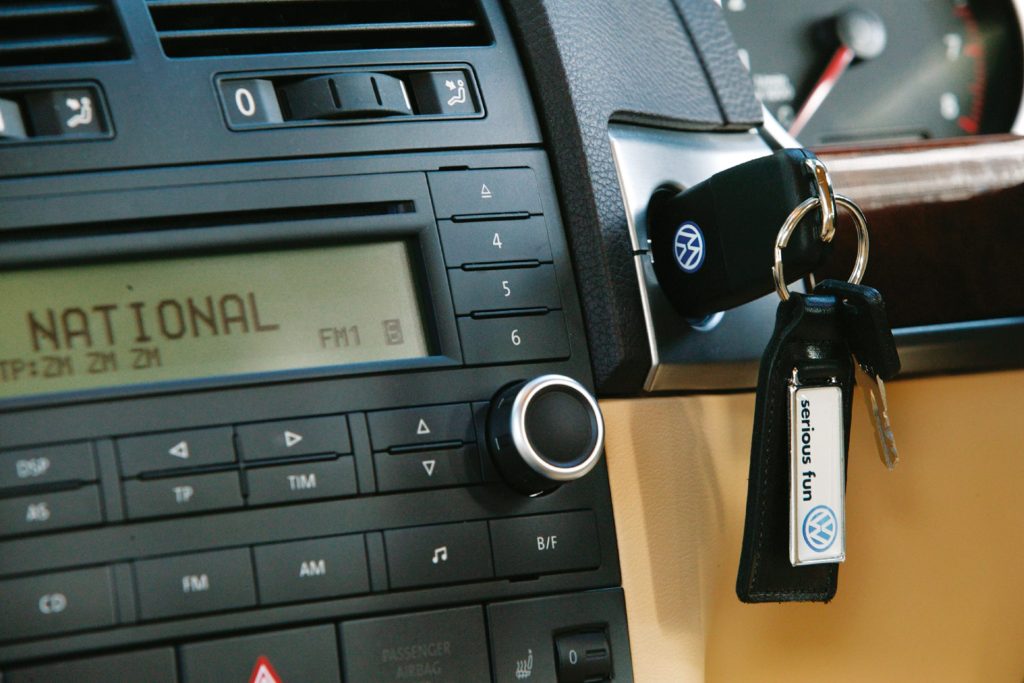
First proof of Touareg’s Range Rover-equalling off-road ability arrived during a tough drive in the Spanish Pyrenees last year. The route was steep, gnarled with big rocks and other obstacles, and slippery, with early morning drizzle combining with a clay surface. Walking upright was difficult enough [too much to drink again, eh, Paul? – Ed], let alone driving two tonnes of SUV over such a route. Yet the Touaregs shot up the Spanish hills like mountain goats, despite the tread of their road-oriented Bridgestone Turanza tyres quickly turning slick with clogged clay.
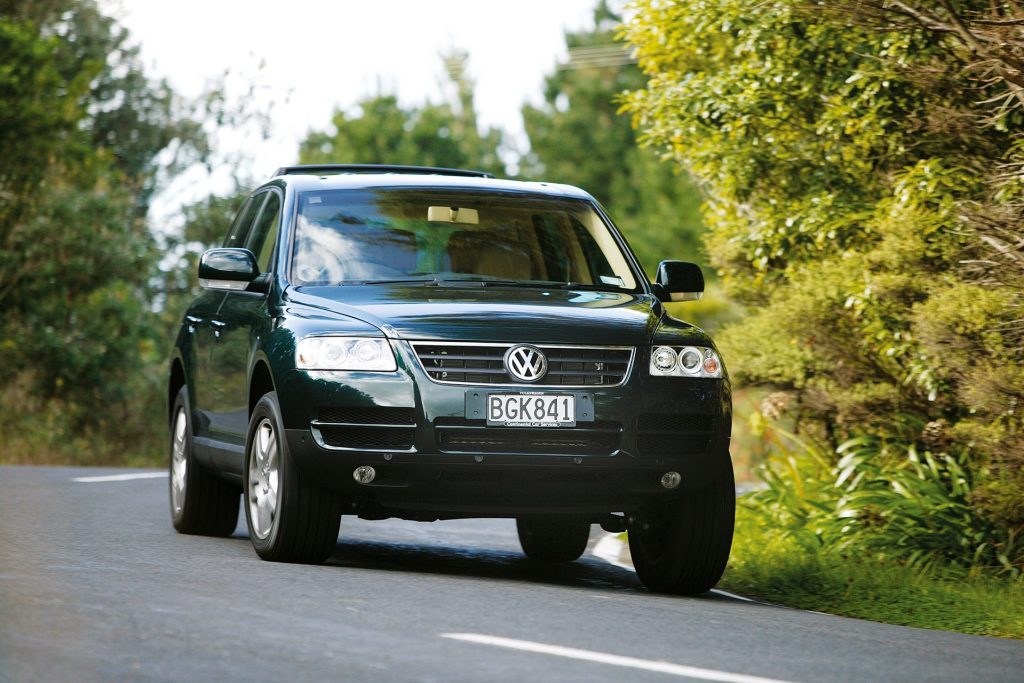
By contrast, our drive over West Coast sand dunes was a cakewalk for the early-arriving V6 once the standard-issue low range and centre diff-lock had been selected. Attempts to stick the Touareg into the sand by stopping on uphill slopes, then attempting to take off again, failed dismally. This thing will virtually go anywhere a camel can, inviting speculation that VW might even sell a few in Timbucktu. Then again, they might not, given the preference of the local tribe that shares the car’s name for waiting until the Paris-Dakar Rally comes along, and relieving a few competitors of their cars at gunpoint.
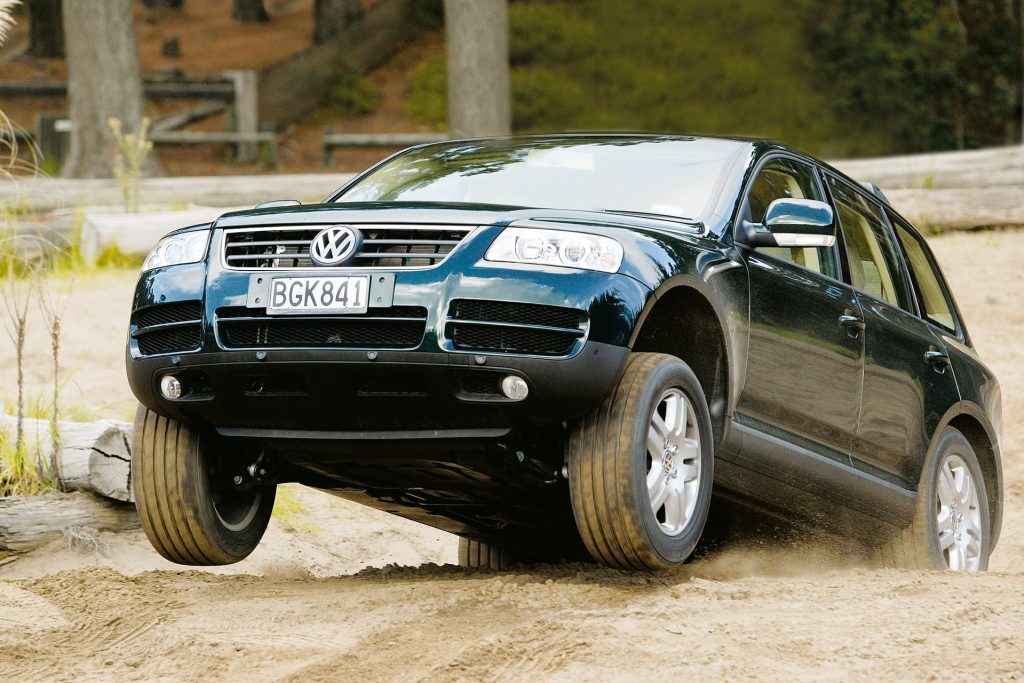
There are two things that make the Touareg different from the Porsche alternative – three, if you count the difference in suspension tuning. The latter is hardly noticeable, unlike the default settings of the adaptive all-wheel-drive system and VW’s wider range of engine options. Both Touareg and Cayenne have the ability to adapt their front-to-rear torque distribution according to the available traction, but in times of good grip, the VW settles into a 50:50 front-rear torque split like a Subaru, while the Cayenne prefers a more X5-like 30:70 front-rear split for less understeer-flavoured handling. Not that you really notice the difference until ‘going for the doctor’.
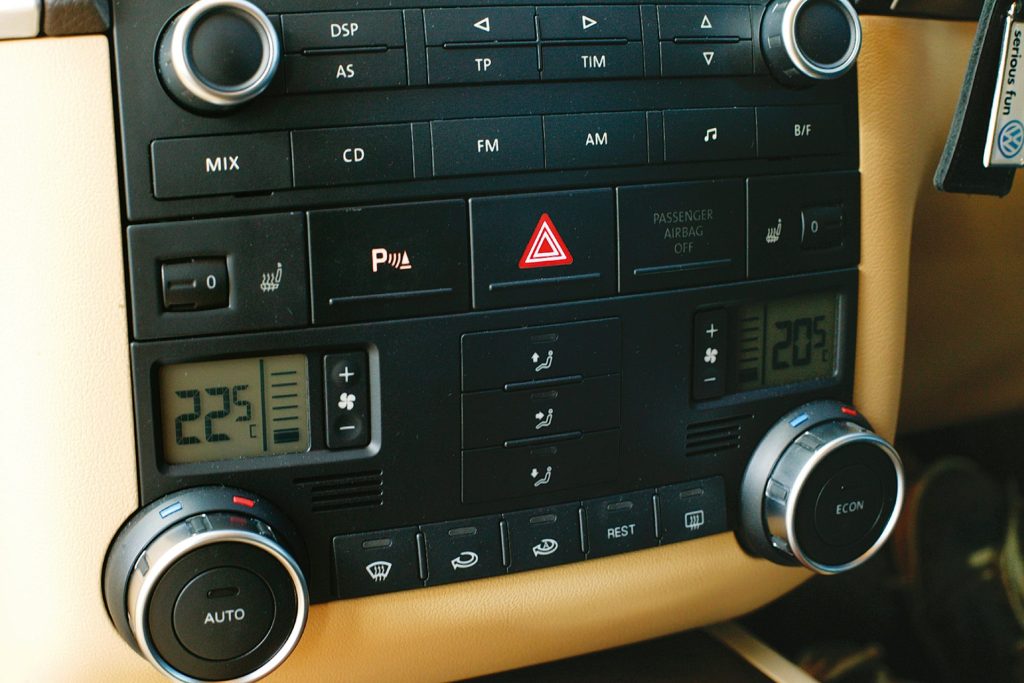
More affordable engines and production costs amortised over higher volumes make VW’s strategy of pulling people out of mass-market SUVs – such as sundry Discos, Cherokees and Prados – possible. The entry price is roughly two-thirds that of the base Cayenne – not that you’d call Touareg’s 3.2 litre V6 ‘cheap’. It’s the same motor as that used by the hottest Golf – the $76,990 R32 – albeit detuned slightly, with a few mods to make it more off-road compatible. Instead of 180 kW in R32 form, the narrow angle (15 degrees!), variable-valve-timed V6 makes 162 kW at 6400 rpm, losing a few rpm off the redline and 18 kW of power, courtesy of more restrictive induction and exhaust systems. Peak torque also takes a slight dip, though you’d be unaware of it from the driver’s seat. On the up side, changes to the ancillary belt drive and sump permit the V6 to wade through creeks half a metre deep, and there is no reason to doubt VW’s claimed 0-100 km/h time of 9.9 seconds for the most reasonably priced Touareg. Snuggled up to ZF’s excellent six-speed automatic, the motor produces enough midrange surge to enliven and motivate 2.2 tonnes of mass with satisfying urgency. Overtaking on the open road, you wouldn’t believe that this is the most affordable motor of the range. The auto kicks down a gear or three smartly, and the motor whisks you past slower traffic with more urgency than most two-tonne+ SUVs. There’s enough potency in the V6 powertrain’s performance to suggest that this may even be a quicker vehicle than a Range Rover V8 (0-100: 9.93 seconds, 80-120: 6.8 seconds). Certainly it is the more frugal alternative. Our 23-hour drive saw the trip computer record a fuel-use average of 13.5 litres per 100 km.
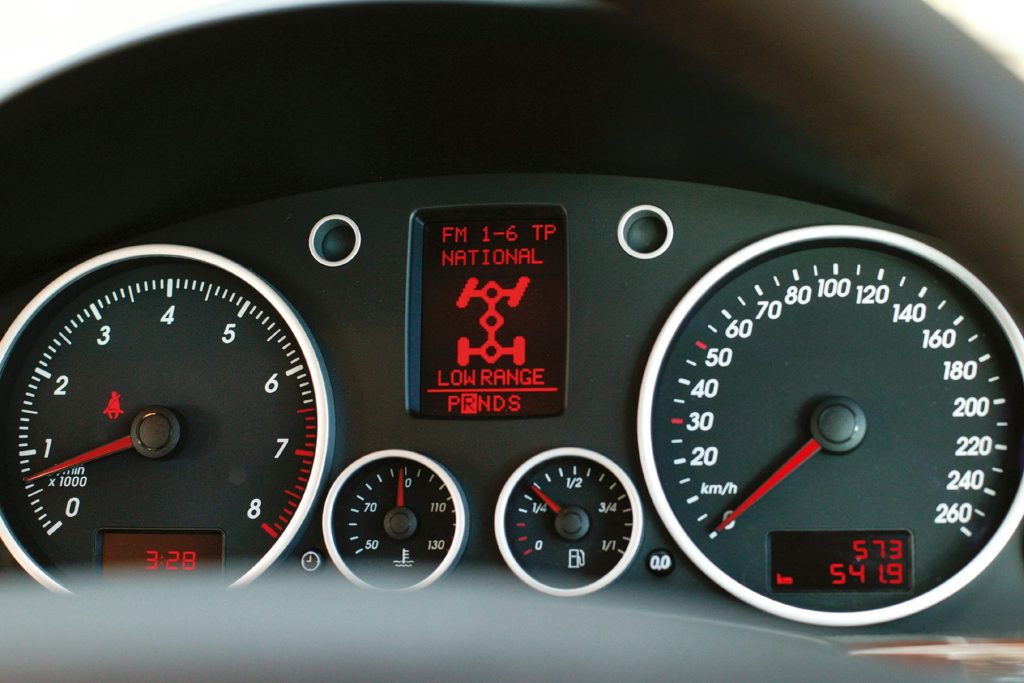
Why the Range Rover V8 comparisons? This seems the natural target for Touareg, given its combination of off-road ability, on-road refinement, and a relatively luxurious and spacious cabin. The Rangie interior might win in terms of presentation, but drive both over any long distance and we predict you’ll arrive feeling just as fresh in one as the other. There’s an Audi-like ambience inside the base Touareg, although it could use the Multi Media Interface of the latest A8 saloon to tidy up the secondary control layout a bit. There’s more buttons to push than in the Beatle’s Yellow Submarine, and it will take a few weeks of ownership before operating Touareg becomes intuitive.
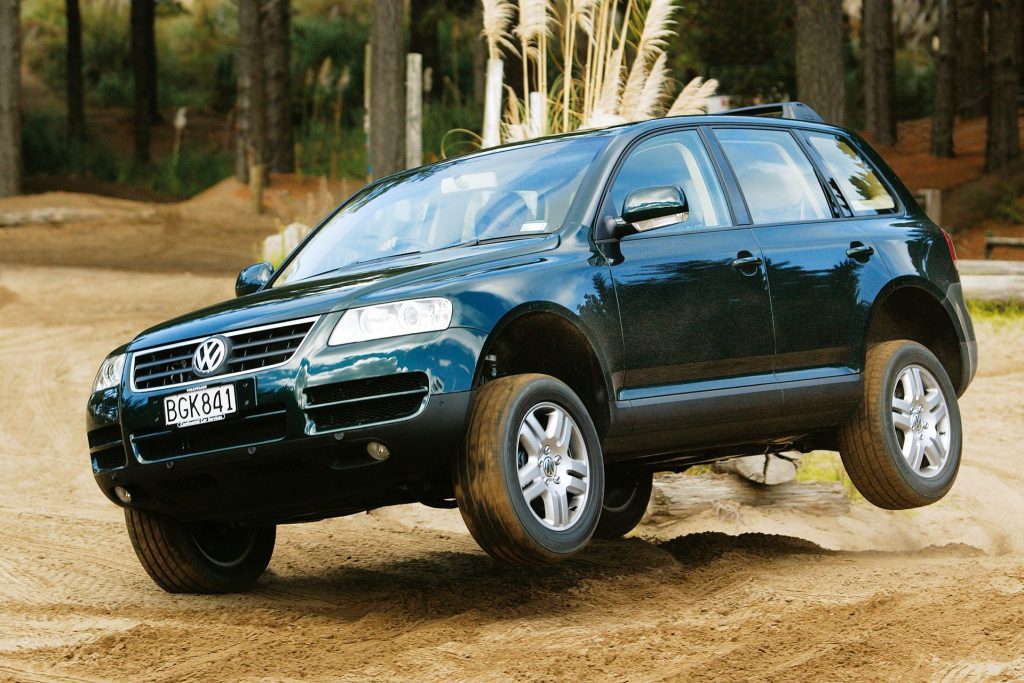
Onlookers will identify the entry-level Touareg by its lack of chrome on the outside, the 17” alloy wheels and the extra cup-holder on the centre console, created by the deletion of the air-suspension ride-height settings. Next cab up in rank is the $129,990 V8 Touareg, powered by the same 246 kW 4.2 litre V8 as the Audi A8 saloon, and identified by its standard-fit 18” alloys and bi-xenon headlights. The $169,990 V10 twin-turbo diesel flagship will come with air suspension standard, and a three-year servicing plan included in the price. Yet it seems strange to kick off a New Zealand SUV range with two petrol engines, and cap it with a diesel. Will the base 2.5 litre five-cylinder turbodiesel Touareg sold in Europe come to New Zealand? VW’s Dean Sheed would neither confirm nor deny any plans to launch the Touareg with essentially one half of the V10’s engine here. Given the pricing of that vehicle in other markets, the 2.5 litre diesel Touareg could lower the entry price to VW’s SUV range by another $10,000. If we were the New Zealand distributors of Toyota, Mercedes, BMW, Volvo, Land Rover, Lexus and Jeep SUVs, we’d be seriously concerned about that prospect.
| Model | 2003 VW Touareg |
| Price | $99,990 |
| Engine | 3189cc, V6, EFI |
| Power/Torque | 162kW/305Nm |
| Drivetrain | 6-speed automatic, adaptive AWD |
| 0-100km/h | 9.9sec (claimed) |
| Weight | 2229kg (claimed) |
This article was first published in the June 2003 issue of NZ Autocar Magazine.


